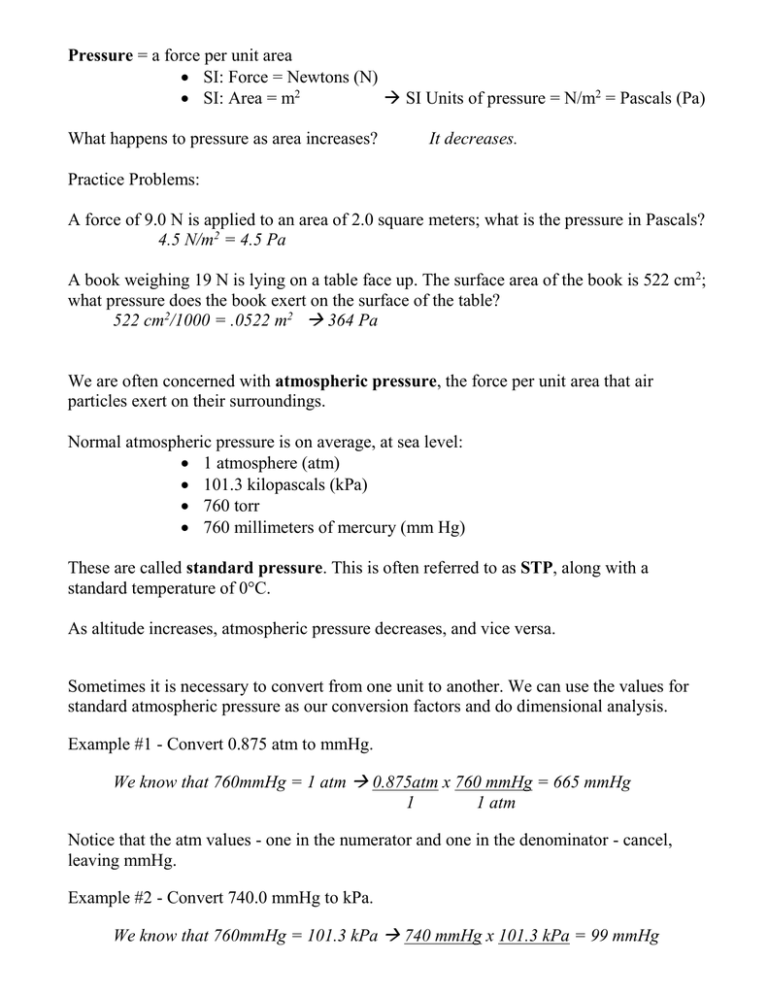
However, we know something not in the problem: at sea level, the boiling point of water is 100 ☌. If the balloon is filled with 2.0 liters of helium at sea level (101.3 kPa), and rises to an altitude at which the boiling temperature of water is only 88 degrees Celsius, will the balloon burst?Ĭomment: These is no way of determining the starting temperature of the gas. (800.0 torr) (400.0 mL) = (1000.0 torr) (x)īonus Example #1: A particular balloon is designed by its manufacturer to be inflated to a volume of no more than 2.5 liters. What would the volume of the gas be at a pressure of 1000.0 torr? Problem #15: 400.0 mL of a gas are under a pressure of 800.0 torr. What is the volume of the gas at 2.00 atm? Problem #14: 600.0 mL of a gas is at a pressure of 8.00 atm. Determine the volume if the pressure is increased to 1.25 atm. Problem #13: A gas occupies 4.31 liters at a pressure of 0.755 atm. Problem #12: If the pressure on a gas is decreased by one-half, how large will the volume change be? Problem #11: When the pressure on a gas increases, will the volume increase or decrease? Problem #10: Convert 77.0 L at 18.0 mmHg to its new volume at standard pressure. Problem #9: Convert 273.15 mL at 166.0 kPa to its new volume at standard pressure. Problem #8: Convert 338 L at 63.0 atm to its new volume at standard pressure. Problem #7: Convert 350.0 mL at 740.0 mmHg to its new volume at standard pressure. What will the volume be at standard pressure?

Problem #6: 500.0 mL of a gas is collected at 745.0 mmHg. What is the pressure if the volume becomes 15.0 L? Problem #5: A gas occupies 11.2 liters at 0.860 atm. What will be the volume of this gas if the pressure becomes 3.00 atm? Problem #4: A gas occupies 1.56 L at 1.00 atm. It just matters that they be the same on each side. It doesn't matter what the volume units are. Problem #3: To what pressure must a gas be compressed in order to get into a 3.00 cubic foot tank the entire weight of a gas that occupies 400.0 cu. Problem #2: If a gas at 25.0 ☌ occupies 3.60 liters at a pressure of 1.00 atm, what will be its volume at a pressure of 2.50 atm? What is the volume when the pressure is increased to 60.0 mmHg? Problem #1: A gas occupies 12.3 liters at a pressure of 40.0 mmHg.
1 mmhg to atm full#
Symbols, abbreviations, or full names for units of length,Īrea, mass, pressure, and other types.Problems #1-15 Ten examples A list of all examples and problems (no solutions) Problems 16-30 Return to KMT & Gas Laws Menu You can find metric conversion tables for SI units, as wellĪs English units, currency, and other data.

It is approximately equal to Earth's atmospheric pressure at sea level.Ĭonversion calculator for all types of measurement units. It is sometimes used as a reference pressure or standard pressure.

The standard atmosphere (symbol: atm) is a unit of pressure defined as 101325 Pa (1.01325 bar). The unit is named after Evangelista Torricelli, Italian physicist and mathematician, for his discovery of the principle of the barometer in 1643. It is the atmospheric pressure that supports a column of mercury 1 millimetre high. The torr (symbol: Torr) or millimetre of mercury (mmHg) is a non-SI unit of pressure. You can do the reverse unit conversion fromĪtm to mmHg, or enter any two units below: Enter two units to convert From:


 0 kommentar(er)
0 kommentar(er)
